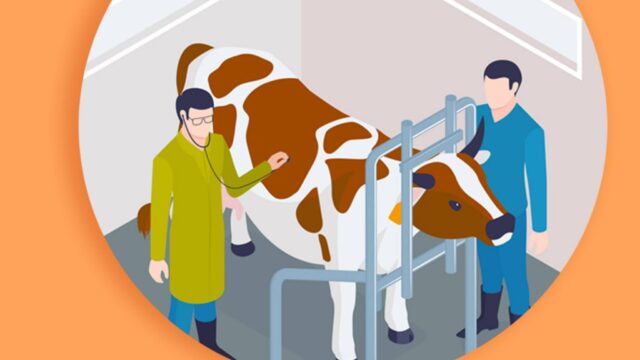
Infertility in bovines stands as a critical issue within the agricultural landscape of India, posing significant challenges to both farmers and the national economy. With a substantial dependence on bovines for dairy production, draught power, and agricultural activities, the occurrence of infertility disrupts the productivity and sustainability of the livestock sector. Understanding the complexities surrounding bovine infertility is crucial for implementing effective measures to mitigate its impacts and enhance the livelihoods of millions involved in the dairy and agriculture sectors across India.
BOVINE INFERTILITY:
Bovine infertility refers to the inability of cattle and buffalo to conceive or maintain pregnancy, leading to reduced reproductive efficiency and lower fertility rates within herds. Various factors contribute to infertility in bovines, encompassing environmental, genetic, nutritional, and management-related aspects.
- Environmental factors:
India’s diverse climatic conditions expose bovines to a range of environmental stressors, including extreme temperatures, humidity, and inadequate shelter. These stressors can adversely affect reproductive processes, leading to decreased fertility rates among cattle and buffalo populations. - Genetic factors:
Genetic predispositions to reproductive disorders play a significant role in bovine infertility. Inbreeding, poor selection practices, and the prevalence of genetic abnormalities contribute to reduced fertility rates and reproductive inefficiencies in bovine populations across India. - Nutritional factors:
Nutritional deficiencies, imbalances, and inadequate feeding practices impact reproductive performance in bovines. Poor-quality feed, insufficient access to clean water, and deficiencies in essential nutrients such as vitamins and minerals compromise the reproductive health of cattle and buffalo, leading to increased infertility rates. - Managemental factors:
Inadequate management practices, including improper breeding protocols, inadequate healthcare services, and suboptimal housing conditions, exacerbate the challenges associated with bovine infertility. Limited access to veterinary care and reproductive technologies further hinders efforts to address infertility issues effectively.
IMPACTS ON AGRICULTURE AND LIVELIHOOD:
The prevalence of infertility in bovines significantly impacts agricultural productivity, dairy production, and rural livelihoods across India. Reduced fertility rates diminish the number of offspring and limit the expansion of livestock herds, thereby restricting the potential for increased milk production and agricultural output. Moreover, infertility-related losses impose financial burdens on farmers, impeding their ability to invest in improved breeding practices, healthcare services, and infrastructure upgrades.
Addressing the Challenges: Strategies and Interventions:
To combat the multifaceted challenge of bovine infertility in India, concerted efforts are required at various levels, encompassing research, policy interventions, capacity building, and technology dissemination. Key strategies to address bovine infertility include: - Genetic Improvement Programme: Implementing structured breeding programs aimed at enhancing the genetic diversity and reproductive performance of bovine populations through selective breeding and genetic selection strategies.
- Nutritional Management: Promoting optimal feeding practices and ensuring access to high-quality feed and nutritionally balanced diets to support reproductive health and fertility in cattle and buffalo.
- Health care services: Strengthening veterinary healthcare services and extension programs to provide timely reproductive health management, disease prevention, and fertility-related interventions to bovine populations.
- Research and Innovations: Encouraging research and development initiatives to better understand the underlying causes of bovine infertility, develop innovative reproductive technologies, and enhance diagnostic capabilities for early detection and intervention.
- Awareness and Training: Conducting farmer training programs, workshops, and awareness campaigns to disseminate knowledge, build capacity, and promote best practices in bovine reproductive management and infertility prevention.
CONCLUSION:
Infertility in bovines remains a significant impediment to the sustainability and productivity of India’s livestock sector, posing challenges to agricultural development and rural livelihoods. Addressing the complexities of bovine infertility requires a holistic approach integrating research, policy support, technological innovation, and community engagement to improve reproductive outcomes and enhance the resilience of bovine populations against environmental, genetic, and management-related stressors. By prioritizing investments in infrastructure, healthcare services, and capacity-building initiatives, India can foster a more robust and resilient livestock sector, ensuring the well-being of farmers, enhancing food security, and sustaining economic growth in rural communities for generations to come.
REFERENCES:
Dutt, R., & Kumar, P. (2018). Causes and effect of infertility in cattle and buffalo: A review. Journal of Entomology and Zoology Studies, 6(1), 153–158.
National Dairy Development Board (NDDB). (2020). Annual Report 2019–2020. Retrieved from https://www.nddb.coop/information/annual-reports
Pathak, A. K., & Gupta, A. (2018). Impact of heat stress on reproductive performances of dairy cattle and buffaloes: A review. Veterinary World, 11(6), 744–749.
Singh, J., et al. (2020). Management practices for enhancing reproductive efficiency in cattle and buffalo. Indian Journal of Animal Sciences, 90(4), 571–581.
Singh, S., Yadav, B. R., & Yadav, S. K. (2016). Reproductive biotechnologies in cattle: Present and prospects. Journal of Animal Research, 6(4), 663–676.

Karishma Choudhary and Vinod Kumar Palsaniya
M.V.Sc. (LPM), CVAS, Navania, Vallabhnagar, Udaipur

















